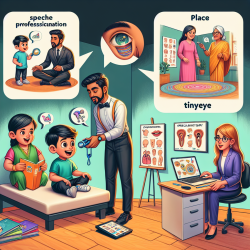Understanding Structural Stigma and Its Impact on Alcohol Use Among Sexual and Gender Minority Adults
As professionals dedicated to improving outcomes for children and communities, it's crucial to understand the broader societal factors that influence health behaviors. The recent systematic review titled Structural stigma and alcohol use among sexual and gender minority adults: A systematic review provides valuable insights into how structural stigma affects alcohol use among sexual and gender minority (SGM) adults.
Key Findings from the Research
The systematic review analyzed 11 studies and found a significant association between structural stigma and negative alcohol-related outcomes among SGM adults. Here are some critical takeaways:
- Structural stigma is positively associated with negative alcohol-related outcomes, such as alcohol use disorder (AUD) and heavy episodic drinking (HED).
- There are disparities in alcohol use by gender, race, ethnicity, and sexual identity, with sexual minority women (SMW) and bisexual women experiencing more pronounced disparities.
- Transgender and nonbinary individuals, as well as SGM people of color, are underrepresented in research.
- Most studies used cross-sectional designs and non-probability samples, indicating a need for more comprehensive research approaches.
Implications for Practitioners
Practitioners working with SGM individuals should consider the impact of structural stigma on health behaviors. Here are ways to integrate these findings into practice:
- Advocate for Policy Change: Support policies that reduce structural stigma, such as non-discrimination laws and inclusive healthcare policies.
- Enhance Cultural Competency: Develop a deeper understanding of the unique challenges faced by SGM individuals, particularly in hostile policy environments.
- Tailor Interventions: Design interventions that address both individual and structural factors influencing alcohol use among SGM individuals.
- Conduct Further Research: Encourage research that includes diverse SGM populations and employs longitudinal designs to better understand the long-term effects of structural stigma.
Moving Forward
Addressing structural stigma is critical in reducing negative alcohol-related outcomes and inequities among SGM people. Practitioners can play a pivotal role by advocating for policy changes, enhancing cultural competency, and tailoring interventions to meet the needs of diverse SGM populations. By doing so, we can contribute to healthier communities and better outcomes for all individuals.
To read the original research paper, please follow this link: Structural stigma and alcohol use among sexual and gender minority adults: A systematic review.










